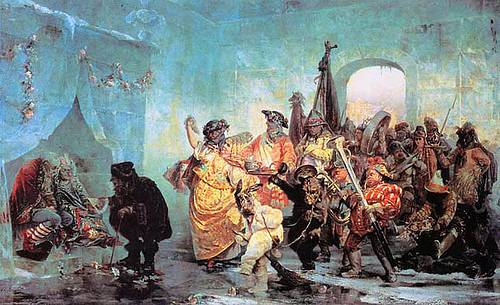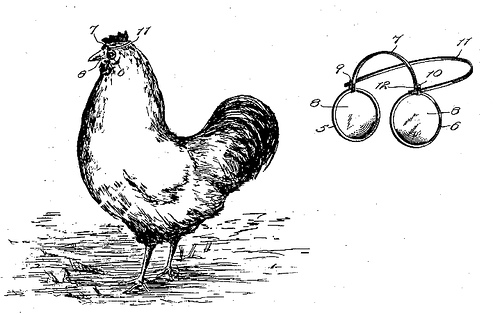
The British merchant ship Madagascar set sail from Melbourne in August 1853, headed for London and carrying 60,000 ounces of gold dust.
She was never seen again.

The British merchant ship Madagascar set sail from Melbourne in August 1853, headed for London and carrying 60,000 ounces of gold dust.
She was never seen again.
I thought I knew I knew it all,
But now I must confess,
The more I know I know I know,
I know I know the less.
— Anonymous
In the 1890s, William Randoph Hearst’s New York Journal was in a circulation war with Joseph Pulitzer’s New York World. When the World published an obituary of “Reflipe W. Thanuz,” Hearst revealed a trap — there was no such person, so Pulitzer must have stolen the item from his paper. (“Reflipe W” is “we pilfer” spelled backward, and “Thanuz” is “the news”.)
Pulitzer got his revenge, though. He planted the name “Lister A. Raah” in a World story, and when the Journal ran a similar item, he revealed that the name was an anagram of “Hearst a liar.”
See also Nihilartikels.

In 1739, to celebrate Russia’s victory over Turkey, empress Anna Ivanovna ordered a palace of ice to be built in St. Petersburg. Designed by architect Pyotr Yeropkin, the massive building was 60 meters long and 6.5 high, surrounded by sculptures and artillery, fully furnished (including a bed, mattress, and pillows), and featuring a garden filled with trees, birds, and even an elephant. All of this was made entirely of ice.
It melted the following summer.
bathycolpian
adj. having deep cleavage
The shortest line that can be drawn on the earth’s surface, one end of said line being at the mouth of the Rio Grande river in the Gulf of Mexico, and the other end at Pekin, in China, will cross Behring’s Strait. If you doubt it, take a large terrestrial globe and some thread and convince yourself. This truth may be of far greater value than we now know. What say you, gentlemen? Shall we begin the Pekin and Denver road at its Asiatic terminus, and so let the road bring along the labor that is to build it?
— Bizarre Notes & Queries, April 1886

When self-styled “moisture accelerator” Charles Hatfield arrived in San Diego in 1915, he’d already created storms for ranchers in Los Angeles. Or, rather, storms had appeared after he’d released his secret chemical mixture into its evaporating tanks; critics claimed the storms were already coming. But San Diego needed to fill its Morena Dam reservoir, so they agreed on a fee and Hatfield released his chemicals.
On Jan. 16, 1916, heavy rain started and didn’t stop. Dry riverbeds filled, then overran their banks, flooding farms and homes, destroying bridges, cutting telephone cables, and marooning trains. Two dams overflowed and one broke, killing 20.
Hatfield said he’d filled the reservoir as agreed and disclaimed responsibility for the $3.5 million in damage. After a long legal battle, the rain was ruled an act of God and then the courts threw out the case.
Hatfield never did reveal his chemical recipe. He died in 1958.

If all the trees in all the woods were men,
And each and every blade of grass a pen;
If every leaf on every shrub and tree
Turned to a sheet of foolscap; every sea
Were changed to ink, and all earth’s living tribes
Had nothing else to do but act as scribes,
And for ten thousand ages, day and night,
The human race should write, and write, and write,
Till all the pens and paper were used up,
And the huge inkstand was an empty cup,
Still would the scribblers clustered round its brink
Call for more pens, more paper, and more ink.
— Oliver Wendell Holmes, “Cacoëthes Scribendi”

If you were planning to get rich by inventing chicken spectacles, you’re 100 years too late.
Andrew Jackson patented this pair in 1903 so that chickens could “be protected from other fowls that might attempt to peck them.”
Nothing is heavier than lead.
Feathers are heavier than nothing.
Therefore feathers are heavier than lead.